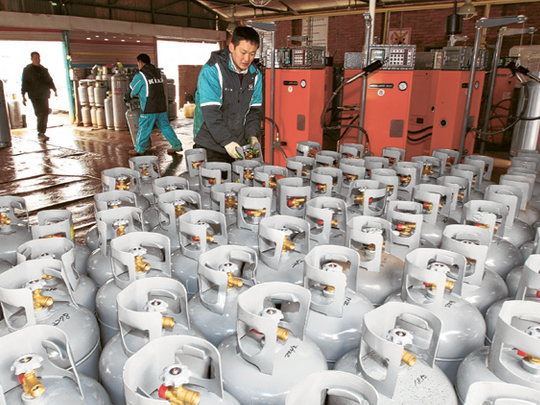
Last week I discussed The International Energy Agency's (IEA) report "Are we entering a golden age of gas?" where natural gas demand outlook was presented.
On the supply side, the OECD region's supplies are likely to increase from 1,157 billon cubic metres (bcm) in 2008 to 1,404 bcm in 2035 with a decline in the production of Western Europe. The non-OECD region supply growth is expected to be from 2010 bcm in 2008 to 3,728 bcm in 2035.
The Middle East supply is likely to grow from 393 bcm in 2008 to 917 bcm in 2035. This is not surprising considering the great oil and gas potential of the region. While conventional gas is expected to contribute an additional 1.1 trillion cubic metres (tcm) to gas supplies in 2035, non-conventional is expected to contribute 0.8 tcm.
These resources fall outside the realm of associated gas and free gas strictly from gas fields which are considered conventional. The gas from coal bed methane, shale gas and tight reservoir gas are considered non-conventional and usually more expensive and difficult to produce.
Countries such as the US, China, Canada, Russia and Australia are candidates for a large increase in non-conventional gas production. Therefore, the share of non-conventional gas is likely to grow from 12 per cent in 2008 to 24 per cent in 2035.
Future resources
Overall gas resources are sufficient for 120 years at the current consumption level and all recoverable resources may increase this to 250 years.
The main exporting regions of natural gas are likely to remain the same where Russia, the Caspian countries, the Middle East and Africa will supply the expanding markets of Europe, China, India, OECD Pacific and even the US to a lesser extent.
This trend will enforce the possible formation of a global gas market especially as there is an increasing trend in spot sales of liquified natural gas. Liquifaction capacity in 2008 was 270 bcm and is projected to reach 450 bcm in 2015 and 540 bcm in 2020 and possibly higher later.
But inter-regional gas pipelines are also expected to help increase trade. The planned and under construction projects until 2015 are of a total capacity of approximately 300 bcm. From Russia, there is the North and South stream pipelines to Europe and others to China and Korea.
Then from the Caspian and Middle East region are projects to Turkey and beyond and others to China and Pakistan. And from North Africa there are projects to Spain and beyond.
Changing prices
Gas pricing, a subject of intense debate, where most long-term contracts are priced relative to oil, may change slowly. In North America, where gas resources are far higher than demand, there is a disassociation with oil prices. Pricing in the rest of the world is likely to continue to be linked to oil prices albeit with some flexibility.
The linkage may weaken if a truly international market emerges where large quantities of gas are exchanged on the spot market.
The investment required to cover the decline in the production of current conventional gas fields and the increased production in conventional and non-conventional fields is expected to be substantial. The IEA suggest investments may reach $8 trillion (Dh29 trillion) where 65 per cent would be required in the upstream and the rest will cover investments in gas transmission, distribution and LNG facilities.
In the Middle East, production costs are relatively low as the associated gas is linked to oil production.
The production costs from the free gas fields are likely to be higher and there is need in the region to review artificially low gas prices. Great expansion is likely to come from Iraq and Qatar when the moratorium on future development of the North field is lifted. Even Saudi Arabia's production is likely to increase, though its needs are far more.
With the exception of the Arab Gas pipeline between Egypt, Jordan and Syria and the Dolphin pipeline between Qatar and the UAE, there is a need to take a fresh look at the situation where cross country pipelines are needed.
Most East Arab countries are short on gas including producers such as Saudi Arabia, Kuwait, Bahrain and the UAE. Before looking at the needs of far markets, regional market must first be supplied efficiently and pipelines need to be looked into. Like every scenario, the IEA projection is likely to be impacted depending on the evolution of assumptions.
The writer is former head of the Energy Studies Department in the Opec Secretariat in Vienna.












